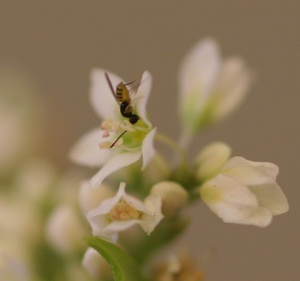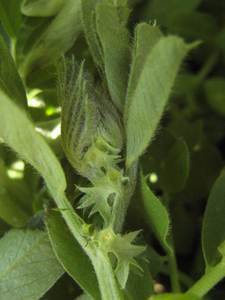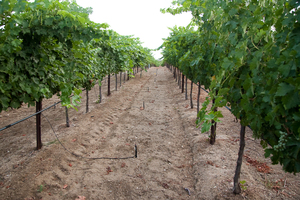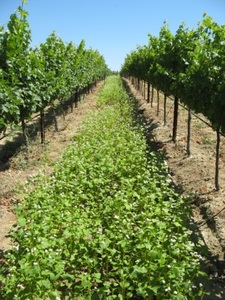Conservation biological control
Often crops are grown in large monocultures and/or herbicides use removes weeds making these habitats unfavorable for natural enemies (NE). Conservation biological control targets NE that are already present. It aims to minimize factors that harm beneficial species (e.g., reducing pesticide use and dust on foliage) and enhance features that make the agricultural fields more favorable for NE (e.g., incorporating plants that provide shelter, alternative hosts/prey, pollen and nectar to NE).

Gonatocerus ashmeadi (parasitoid of GWSS) feeding on nectar from buckwheat flower

Extrafloral nectary on vetch plant – easily accessible to short tongued parasitoids

Vineyard monoculture

Buckwheat sown in a vineyard for conservation biological control of glassy-winged sharpshooter (GWSS) and leafhoppers. Buckwheat provides nectar to increase the survival of parasitoids of these pests.